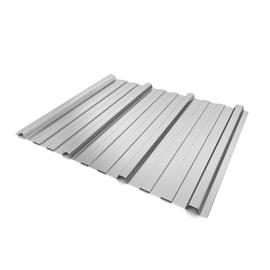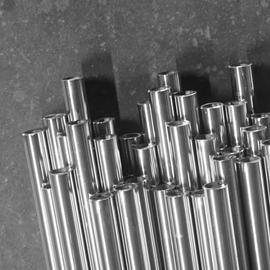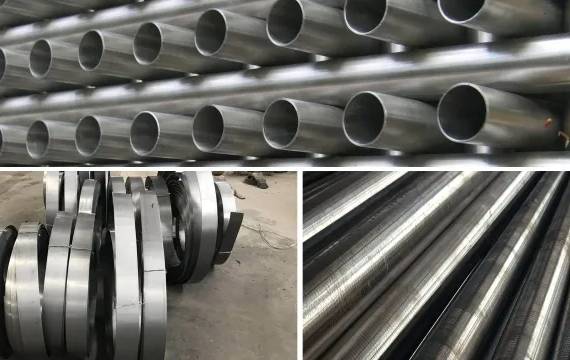Types of Stainless Steel
Stainless steel materials are available in countless variations that are widely used for different applications and projects. Each type of stainless steel material comes with a variety of corrosion resistance, oxidation resistance, melting point, tensile strength, and unique properties. This article will help you understand the different options for choosing the right type of stainless steel. We have lists of explanations to help you understand the common types and properties of stainless steel.
What is Stainless Steel?
Stainless steel metal is a type of alloy commonly produced using different base metals combined together. Thus, forming a new material that is stronger. Stainless steel metals are also called green materials because of their infinite recyclability. Stainless steel is a metal that offers longevity, and inertness, and is environmentally neutral to meet sustainable construction requirements.
Aside from stainless steel is easy to maintain, hygienic, and aesthetically appealing. It offers high durability for a wide range of components and projects. These metals are widely used in different industries including food, transportation, energy, research, etc.

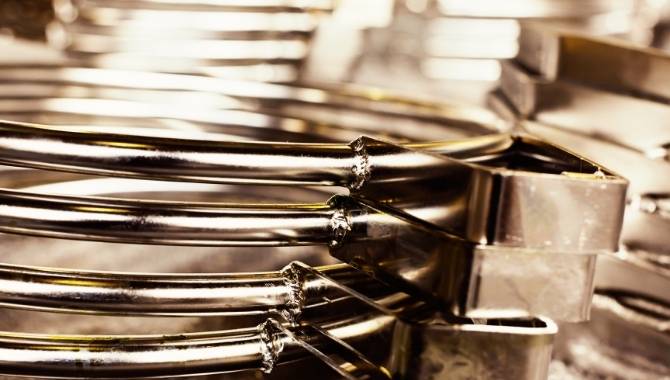
Stainless Steel History
For thousands of years, people have been experimenting with different metal alloys. Stainless steel metals were introduced way back in the year 300 B.C. Since stainless steel is a versatile material, engineers have been experimenting with stainless steel alloy production through the years.
Certain metals are removed or added to create a wide range of stainless steel types with unique characteristics for different applications. Examples of projects where stainless steel is used are components for different industries, appliances, for kitchen utensils, cookware, for knives, used in pharmaceutical industry, watch bands, sinks
and more.
How Many Different Types of Stainless Steel are Produced?


A wide range of materials is used for producing stainless steel to achieve different results. The materials used for creating different types of stainless steel are:
Nickel
Nickel is used for producing stainless steel because it allows the material to be a versatile alloy. The nickels improve the stainless steel’s ductility, weldability, and formability. It also improves the stainless steel’s resistance to corrosion.
Carbon
Stainless steel with a higher carbon content is certified to be longer-lasting and more durable than other alloys. This type of stainless steel is widely used for cooking implements and food-grade utensils production.
Chromium
Stainless steel with chromium contents has different characteristics such as excellent resistance to tarnishing, stains, and corrosion. Stainless steel with chromium is widely used for different outdoor component applications.
4 Types of Different Stainless Steel Finishes
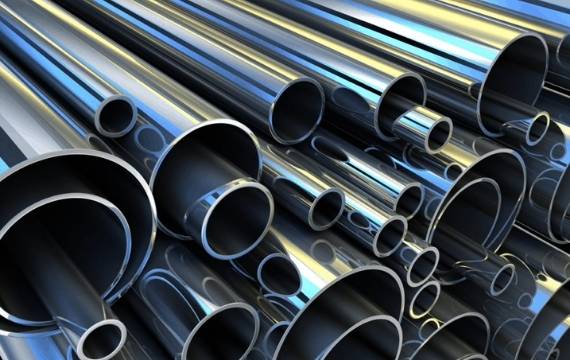
It is the largest type of stainless steel with a face-centered cubic crystal structure. This type of stainless steel is characterized by the chromium content during the production of this material. The components or products produced by this type of stainless steel have more corrosion resistance. Another thing, austenitic stainless steel is characterized by its non-magnetic properties. However, it can become magnetic by undergoing a cold forming process.
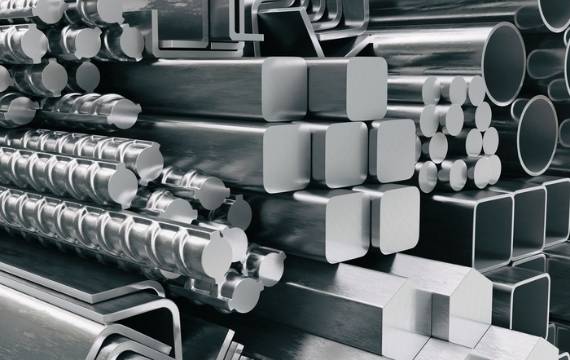
Ferritic type of stainless steel contains 10.5% up to 27% of chromium. It can also contain very low to no nickel content. It has a magnetic structure and components that can be produced by ferritic stainless steel and is hardened through cold forming. These types of stainless steel offer good weldability and are more cost-effective due to their low nickel content. It is widely used for producing automobile exhaust pipes, architectural structures, building components, and more.
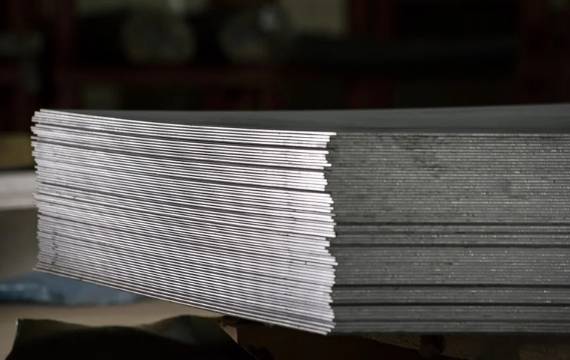
Martensitic is a type of stainless steel that is the least common. These are widely used for applications that require high impact resistance and high tensile strength. It is a strong and ductile stainless steel but with moderate corrosion resistance. To improve its corrosion resistance level, it is usually integrated with a protective polymer coating. Typical components or products that are produced using this type of stainless steel are pumps, valves, turbines, wrenches, cutlery, and more.

This type of stainless steel is produced with an equal proportion of ferritic and austenitic steel. Unlike other typical types of stainless steel, Duplex is superior when it comes to having corrosion resistance and strength. It also features more ductility compared to ferritic steels. A duplex stainless steel can be distinguished by its low nickel and higher chromium content composition. Because of that, duplex stainless steels are most likely to provide cost benefits and high strength.
A Wide Range of Stainless Steel Alloy
- Austenitic Grades
- Ferritic Grades
- Martensitic Grade
- Grades of Duplex Stainless Steel
- Types of Stainless Steel Table
304 Stainless Steel
It is the most common stainless steel grade. 304 stainless steel grades are popular because of their versatility and high tensile strength roughly from 621Mpa or 90ksi. This grade of stainless steel has a maximum of 870⁰C operating temperature. The combination of characteristics such as corrosion resistance, temperature resistance, and high tensile strength makes it suitable for different applications.
316 Stainless Steel
Stainless steel 316 is also a common variety of austenitic steel with up to 579Mpa or 84ksi high tensile strength. It also features up to 800⁰C maximum operating temperature. Unlike SS304, 316 stainless steel grade has excellent resistance to salt and other chlorides. Therefore, making this grade of stainless steel is ideal for applications that deal with chlorides.
Stainless Steel 340 Grade
The most unique characteristic of 340 stainless steel grade is its good nitric acid resistance. It has up to 450Mpa or 65ksi tensile strength which is good for heavy-duty applications.
Stainless Steel 434 Grade
434 grade of stainless steel is a better alternative to 430 stainless steel. It offers 540Mpa or 78ksi tensile strength and up to 815⁰C maximum operating temperature. Because of that, grade 434 is slightly better than 316 for high-temperature applications. It has more pitting resistance, unlike grade 430 stainless steel.
Stainless Steel Grade 420
Stainless steel 420 grade has up to 586Mpa or 85ksi tensile strength when annealed. It is stress relieved or hardened, it can boost up to 1586Mpa or 230ksi tensile strength. Unlike austenitic and ferritic steel, 420 has lesser chemical resistance. However, it has good resistance to food compounds, alkalis, waters, acids, and more. Making it suitable for cutlery applications. 420 stainless steel is ideal for applications that require impact resistance and tensile strength.
Below are the different kinds of duplex stainless steel grades.
- Standard Duplex Stainless Steel. It is the most typical grade of duplex stainless steel with a 28-38 PREN range.
- Super Duplex Stainless Steel. It has a PREN range of 38-45 that is primarily used in the chemical, oil, and gas industry. This type of stainless steel offers more corrosion resistance and strength but is more costly.
- 2507 Duplex Stainless Steel. It is another form of duplex steel that is composed of 7% nickel, 4% molybdenum, and 25% chromium. This type of duplex steel has high resistance to corrosion, stress, and chloride. It also offers low coefficient thermal expansion and high thermal conductivity.
Aside from that, another type of duplex stainless steel also includes Zeron 100 Stainless steel and Lean Duplex Grades. All these types of duplex stainless steel are widely used for different industries such as construction, architecture, water and energy, and chemical engineering.
Related Articles
When it comes to stainless steel, you may hear different numbers including 18/0, and 18/8. 18/10, and more. These numbers are used for identifying the nickel and chromium percentage that is contained in a certain stainless steel alloy. Below are some examples to further explain this type of stainless steel.
18/8 stainless steel. This means that the alloy is composed of 8% of nickel and 18% of chromium.
18/0 stainless steel. You can identify that the present nickel contained in a certain stainless steel alloy is roughly 0.75% and 18% chromium.
18/10 stainless steel. Contains 18% chromium, 10% nickel.
It is important that you know the chromium-nickel mixture in a certain alloy because it will help you find the right stainless steel for your application.
Each specific stainless steel grade has different melting points. Understanding the melting points of each stainless steel type and grade will help you choose the right type for your applications. Heat-treated stainless steels have the following melting points.

Stainless Steel Grade 304: Its melting point ranges from 1400⁰C up to 1450⁰C (2552⁰F-2642⁰F)
Stainless Steel Grade 316: The melting point of this grade ranges from 1375⁰C to 1400⁰ (2507⁰F -2552⁰F)
Stainless Steel Grade 430: It has a melting point of 1425⁰C to 1510⁰C (2597⁰F – 2750⁰F)
Stainless Steel Grade 434: It has a 1426⁰C to 1510⁰C (2600⁰F – 2750⁰F) melting point
Stainless Steel 410: The melting point for this grade is from 1480⁰C to 1530⁰C (2696⁰F – 2786⁰F)
Stainless Steel 420: Its melting point ranges from 1450⁰C to 1510⁰C (2642⁰F – 2750⁰F)
TAKE NOTE: the recommended temperatures for maximum use are typically lower than the maximum number mentioned above.
Because of the limitless options, determining the right stainless steel for your applications can be hard. However, we have listed different factors that you should consider before choosing a specific type of stainless steel for your project.
The Environment
Before choosing specific stainless steel, consider the operating environment. The grade that you will choose considering the operating environment should withstand corrosion, pH, temperatures, and stressors. It should have resiliency, toughness, and strength. For example, if you need stainless steel for a marine project, you should choose a grade that can resist chlorides.
Magnetic Response
Depending on your application, you should also consider the magnetic response of the stainless steel that you want to choose. Other types of stainless steel have lower or higher magnetic responses than the others. Adding chromium makes the metal more magnetic. However, adding nickel can eliminate or offsets the magnetic response of the stainless steel. Examples of non-magnetic stainless steel are grades 310 and 316. On the other hand, grades included in the stainless steel 400 series have a high magnetic response.
Corrosion Resistance
For harsh environments, you may choose a stainless steel type that has good corrosion resistance such as the austenitic. Specifically, the stainless steel grade 316 has the best corrosion resistance among the others.
Weldability and Formability
If you want stainless steel with good formability for your applications, ferritic or austenitic are an ideal choice.
Strength
Determine whether the stainless steel type that you will choose can bear the weight of your application.
Ductility
Make sure that you choose a stainless steel type that can be formed into different shapes without losing its strength.
Toughness
Choose the right stainless steel that will not fracture if undergoes different processes.

Cost
Before choosing, consider the cost of each stainless steel type. Austenitic is the most expensive yet provides the best quality for every application.
316 Stainless steel Vs. 316L Stainless Steel
Request a PDF for more information.






